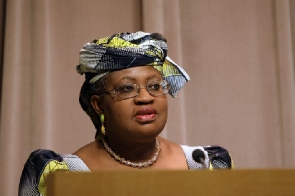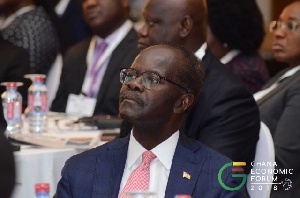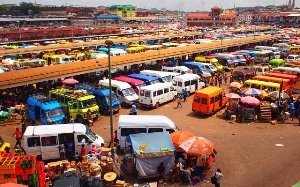Coronavirus: Lagging vaccination timetables in poor countries mars positive short-term outlook for global trade - Okonjo-Iwea
 Ngozi Okonjo‑Iweal, WTO Director-General
Ngozi Okonjo‑Iweal, WTO Director-General
The World Trade Organization (WTO) has noted that the relatively positive short-term outlook for global trade is marred by regional disparities, continued weakness in services trade, and lagging vaccination timetables, particularly in poor countries.
COVID-19, according to the WTO continues to pose the greatest threat to the outlook for trade, as new waves of infection could easily undermine any hoped-for recovery.
“The strong rebound in global trade since the middle of last year has helped soften the blow of the pandemic for people, businesses, and economies,” WTO Director-General Ngozi Okonjo‑Iweala said.
“Keeping international markets open will be essential for economies to recover from this crisis and a rapid, global and equitable vaccine roll-out is a prerequisite for the strong and sustained recovery we all need,” she added.
Short-term risks to the forecast are firmly on the downside and centred on pandemic-related factors. These include insufficient production and distribution of vaccines, or the emergence of new, vaccine-resistant strains of COVID-19. Over the medium-to-long term, public debt and deficits could also weigh on economic growth and trade, particularly in highly indebted developing countries.
The forecast shows two alternative scenarios for trade. In the upside scenario, vaccine production and dissemination would accelerate, allowing containment measures to be relaxed sooner. This would be expected to add about 1 percentage point to world GDP growth and about 2.5 percentage points to world merchandise trade volume growth in 2021.
Trade would return to its pre-pandemic trend by the fourth quarter of 2021. In the downside scenario, vaccine production does not keep up with demand and/or new variants of the virus emerge against which vaccines are less effective. Such an outcome could shave 1 percentage point off of global GDP growth in 2021 and lower trade growth by nearly 2 percentage points.
For the whole of 2020, merchandise trade was down 5.3%. This drop is smaller than the 9.2% decline foreseen in the WTO’s previous forecast in October 2020. The better than expected performance towards the end of the year can partly be explained by the announcement of new COVID-19 vaccines in November, which contributed to improved business and consumer confidence.
The volume of world merchandise trade plunged 15.0% year-on-year in the second quarter of 2020 (revised up from -17.3 % in October) as countries around the world imposed lockdowns and travel restrictions to limit the spread of COVID-19. Lockdowns were eased in the second half of the year as infection rates came down, allowing goods shipments to surge back to near 2019 levels by the fourth quarter.
Faster trade and output growth in the second half of 2020 was supported by major government policy interventions, including significant fiscal stimulus measures in the United States. These measures boosted household incomes and supported continued spending on all goods, including imports. In addition, many businesses and households adapted to the changing circumstances, finding innovative ways to sustain economic activity in the face of health-related restrictions on mobility. Effective management of the pandemic limited the extent of the economic downturn in China and other Asian economies, allowing them to continue importing. These actions helped prop up global demand and may have prevented an even larger trade decline.
Trade-in nominal US dollar terms fell even more sharply than trade in volume terms in 2020. World merchandise export values were down 8% compared to the previous year, while commercial services receipts tumbled 20%. Services trade was especially weighed down by international travel restrictions, which prevented the delivery of services requiring physical presence or face-to-face interaction.
“Ramping up production of vaccines will allow businesses and schools to reopen more quickly and help economies get back on their feet. But as long as large numbers of people and countries are excluded from sufficient vaccine access, it will stifle growth, and risk reversing the health and economic recovery worldwide,” she said.
The Director-General added that trade through value chains has helped countries access food and essential medical supplies during the crisis.
“Manufacturing vaccines requires inputs from many different countries. One leading COVID-19 vaccine includes 280 components sourced from 19 different countries,” she said. “Trade restrictions make it harder to ramp up production. The WTO has helped keep trade flowing during the crisis. Now, the international community must leverage the power of trade to expand access to life-saving vaccines.”
- Commonwealth countries must create 5,000 jobs everyday till 2030 - Foreign Affairs Minister
- Use COVID-19 fund to strengthen health care, immunization financing — HFFG
- Parliament records a new case of coronavirus
- Breach of coronavirus safety protocols: GMA calls for action
- Chadians line up for Sinopharm as coronavirus vaccination campaign begins
- Read all related articles












